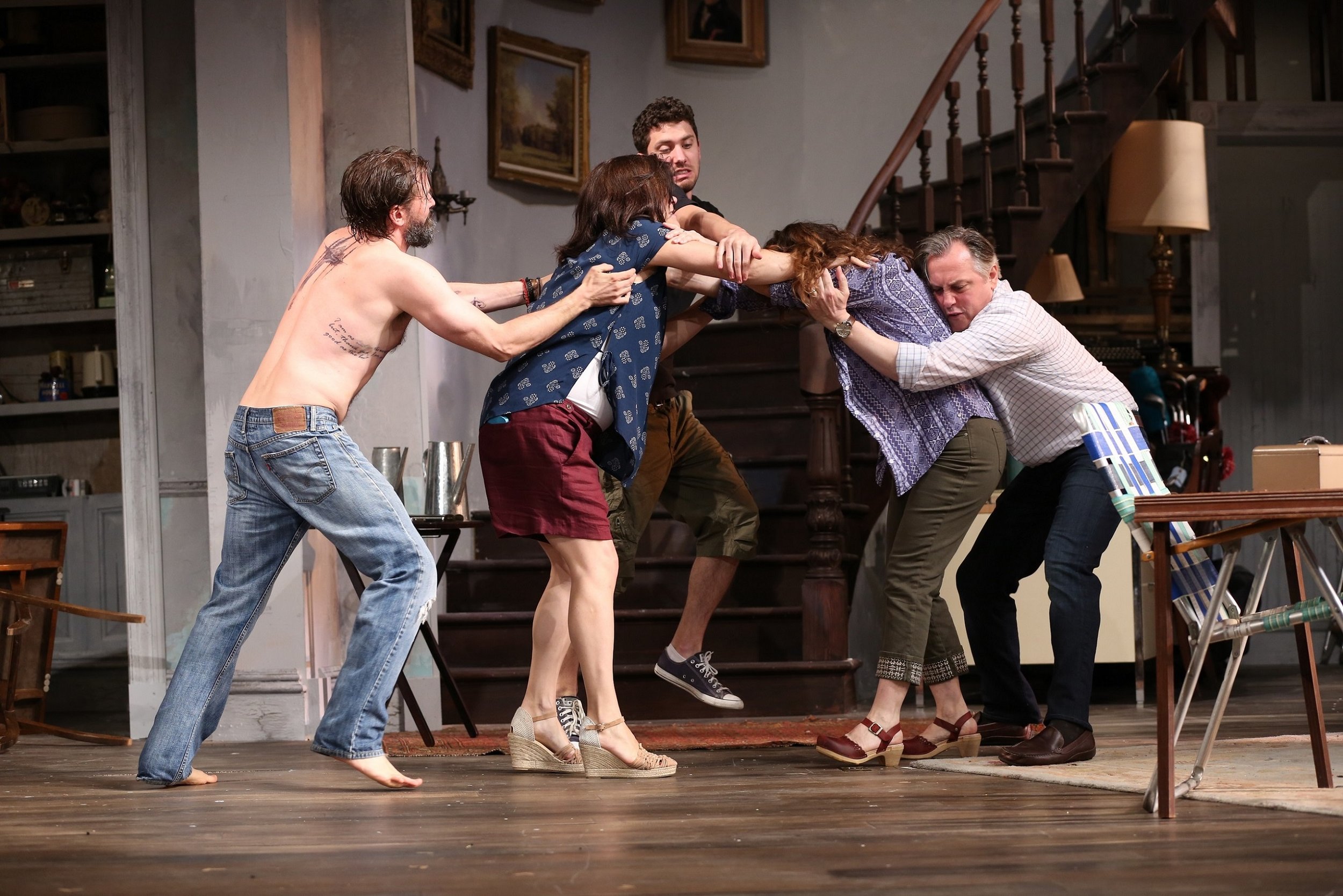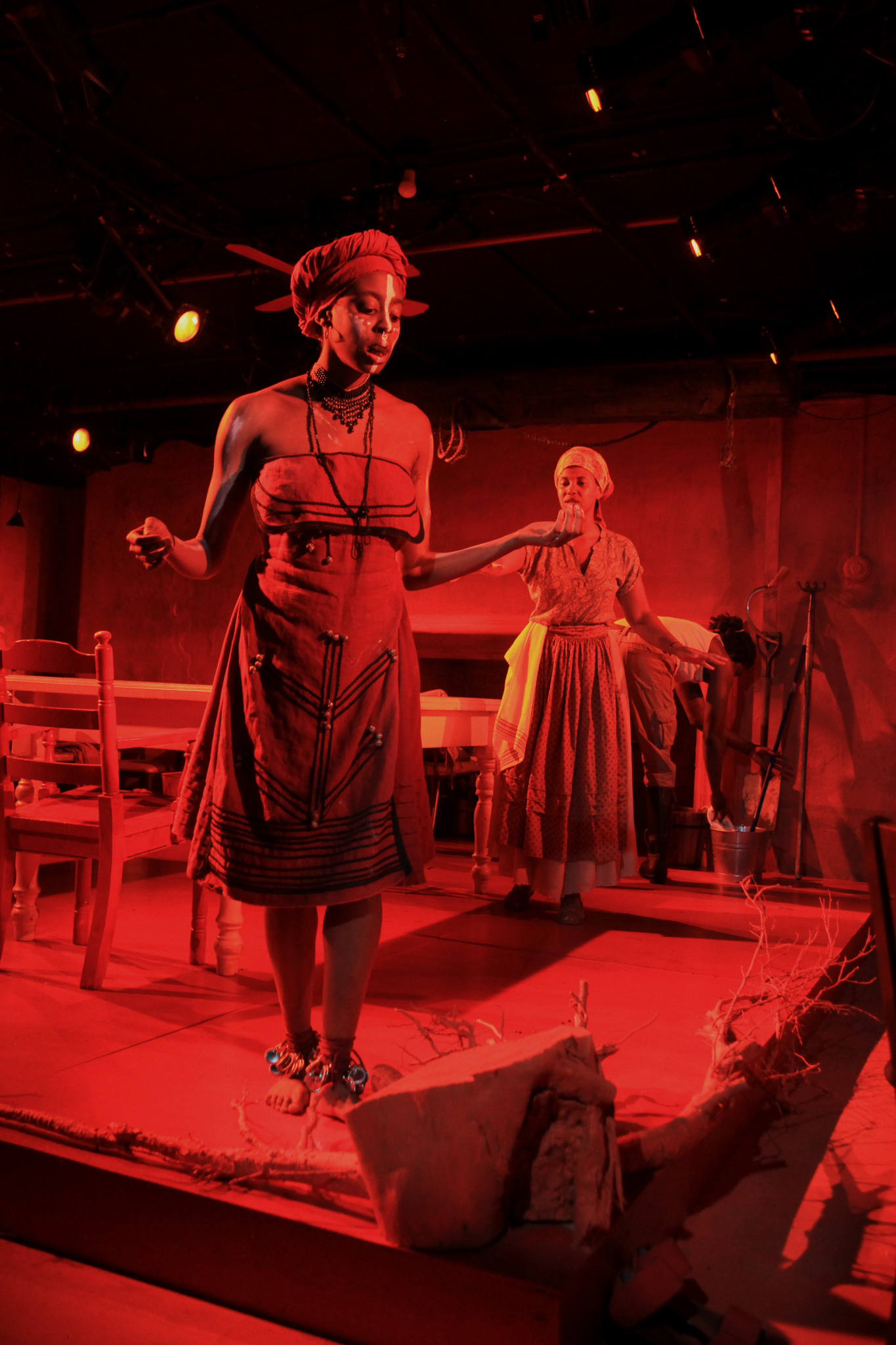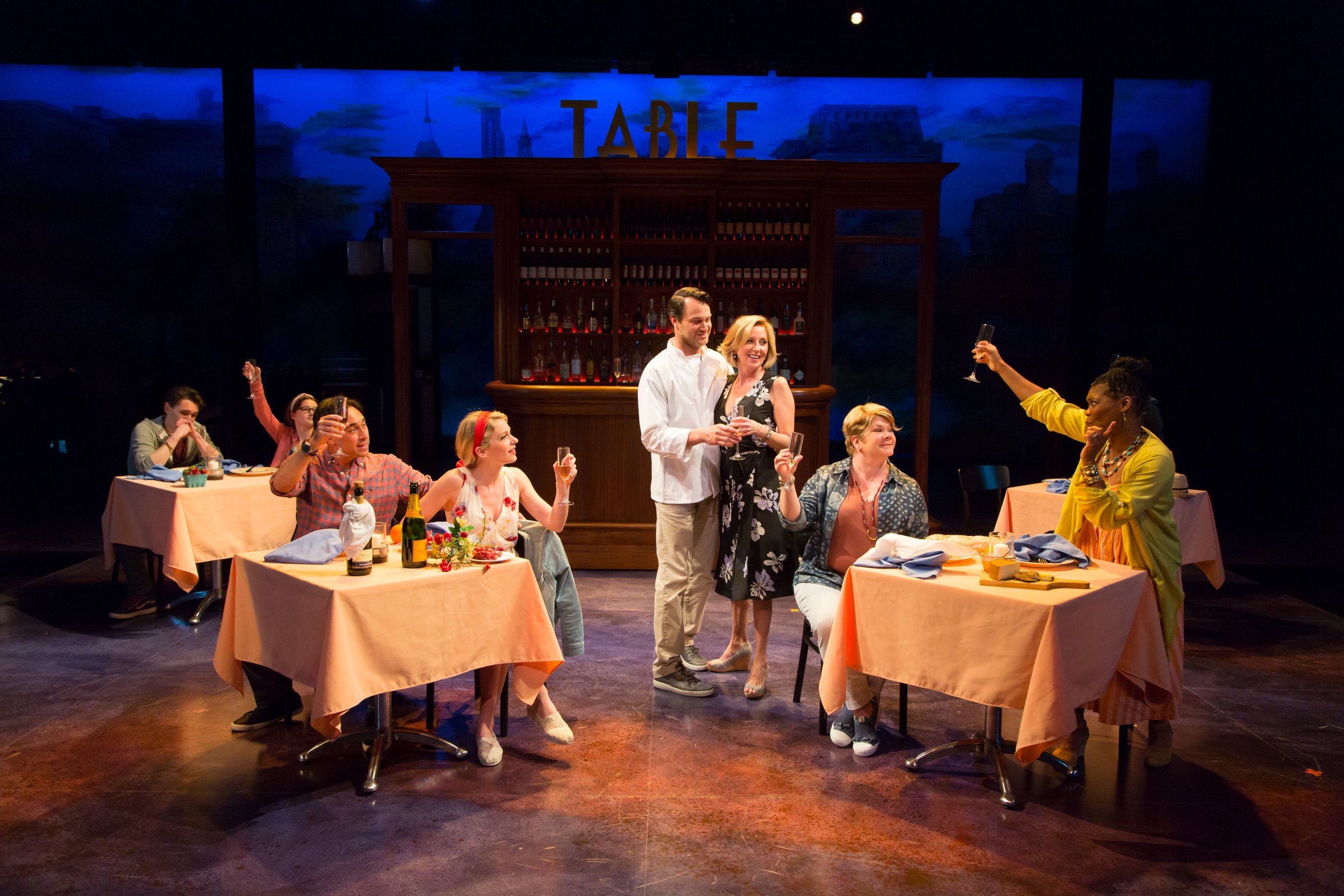Review of The Apple Tree, Yale Cabaret
The second show of Cab 50 is sheer delight. With music by Jerry Bock and lyrics by Sheldon Harnick, both of Fiddler on the Roof fame, and book by both, the story of Adam and Eve, as filtered through Mark Twain’s “The Diary of Adam and Eve,” is retold as a tuneful, funny, rueful, and wise consideration of gender roles. Associate Artistic Director Rory Pelsue directs The Apple Tree with a loving grasp of the material and fulfills his passion-project dream of having third-year actor Courtney Jamison play the role of Eve.
Eve (Courtney Jamison) (photos: Brittany Bland)
Jamison, last seen locally as Juliet in Elm Shakespeare’s summer production of Romeo and Juliet in Egerton Park, was also a stirring voice in the ensemble of last season’s Assassins at Yale Rep. She has the voice, the grace, and the comic gifts to render a charming version of our archetypal mother. She’s a wonder in a crowd-pleaser like “Feelings,” and tugs at the heartstrings in “What Makes Me Love Him.” It’s great to see a talent this big in a theater so small.
Adam (Danilo Gambini), Eve (Courtney Jamison)
The first couple are rendered as a kind of heightened Blondie and Dagwood with Eve’s clear instincts for how to manage life in Eden moving swiftly beyond Adam’s more plodding grasp of things. Tasked with naming the animals—which he regards as a wearisome chore—Adam calls flying creatures “flyers,” swimming creatures “swimmers,” and so forth. Eve, excited by the panoply of life forms, immediately designates creatures by their specific names. She also invents fire and undertakes the first efforts in home improvement and fashion statements, all without earning much respect from her skeptical partner.
Adam (Danilo Gambini)
Danilo Gambini, a first-year director, takes on the comic role of Adam—played in the original production, directed by Mike Nichols in 1966, by Alan Alda. That should give you an idea of the kind of fussy, WASPy egotist our first father is portrayed as. Gambini gives Adam the intense self-centeredness that mostly any man is capable of, but which might be a bit understandable for the first, “sole and single man” on Earth. His efforts to keep us on his side are nicely tongue-in-cheek, as is his hapless attempts to impress with his new invention, humor. His big song, “Eve,” is delivered with the growing sense of maturity of a stricken man-child.
Initially, the duo are clad all in spanking white to signify nakedness—she like she’s going to a formal, he in boyish shorts as if he hasn’t grown into long pants yet. Later, after eating an apple, they wrap themselves in more pedestrian costumes, with red the dominant theme. The snake—Eve’s tempter—is played by a natty Erron Crawford wearing a fanciful snakeskin suit for a number that is the high point of the show. Witty, and crafty, the snake turns poor Eve’s head only to increase her capacity for cognition. Eden, and its innocence, is lost, of course, but the couple gains from the introduction of more purpose into their lives, including the arrival of a being Adam assumes is a fish or possibly a miniature bear. Later, he admits to a certain pride in his offspring, though that Cain is certainly a hellion.
Snake (Erron Crawford), Eve (Courtney Jamison)
The story skimps a bit on the difficulties of raising Cain and Abel, and ends with a sentimental tribute to the joys of long marriage. It all works thanks to the show’s charismatic leads and the way Bock and Harnick keep an entertaining focus on the compromises each partner makes with the other for the sake of their mutual bond. No marriage is perfect, but the couple understand each other much better after leaving paradise.
Eve (Courtney Jamison), Adam (Danilo Gambini), postlapsarian
Subtle lighting effects and projections, such as close-ups of flowers, add atmosphere. The sparse set helps the show maintain the feel of improvised theater, particularly when Adam often feels the urge to draw the curtain on his irksome helpmate. The musicians—the estimable Jill Brunelle, music director and piano, Jenny Schmidt, cello, and Emily Sorenson, flute—are visible accompanists off to one side of the long stage space with the audience spread out before it. Before the show starts the curtain acts as a screen for footage from The Judy Garland Show, featuring Judy’s guests Lena Horne and Terry Thomas. And, indeed, Jamison recalls some of Judy’s gift for nonplussed intelligence faced with that most endearing of obstacles: a well-intentioned man.
Adam (Danilo Gambini)
The Apple Tree offers treats to savor.
The Apple Tree
Music by Jerry Bock, Lyrics by Sheldon Harnick
Book by Sheldon Harnick and Jerry Bock
Directed by Rory Pelsue
Additional book material by Jerome Coppersmith
Based on a story by Mark Twain
Producer: Gwyneth Muller; Dramaturg: Molly FitzMaurice; Scenic Designer: Ao Li; Costume Designer: Matthew Malone; Lighting Designer: Krista Smith; Assistant Lighting Designer: Emma Deane; Projections Designer: Christopher Evans; Sound Consultant: Tye Hunt Fitzgerald; Stage Manager: Abby Gandy; Technical Director: Sayantee Sahoo
Cast: Erron Crawford, Danilo Gambini, Courtney Jamison
Musicians: Jill Brunelle, music director, piano; Jenny Schmidt, cello; Emily Sorenson, flute
Yale Cabaret
September 21-23, 2017





































































